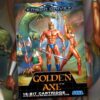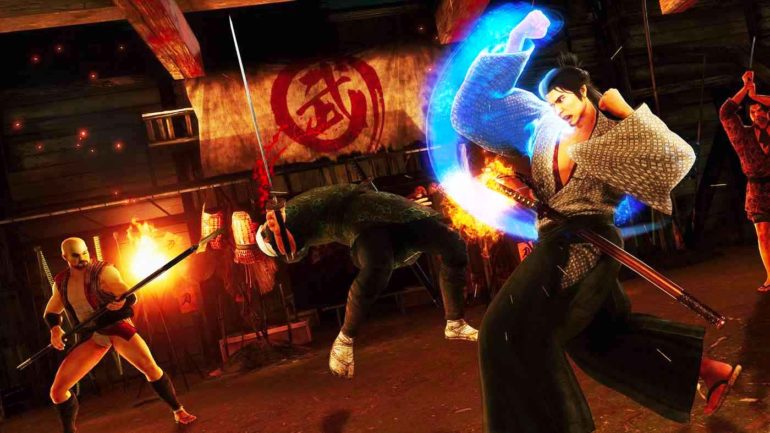It’s not every day you get asked to fly to Tokyo to attend a special summit in-person for the reveal of the next big projects from Ryu ga Gotoku Studio. I did just that this week though, for the first proper unveilings of three new titles in the Yakuza Like a Dragon franchise. I’m not sure how much of it filtered through into the livestreams of the summit seen around the globe, but the excitement in that room was real. Not only did we get our first glimpse at the next mainline title, Like a Dragon 8, RGG also dropped the surprise reveal of Like a Dragon Gaiden: The Man Who Erased His Name with both games featuring the return of Kazuma Kiryu.
You can read about those titles right here, but before all that was a lengthy section devoted to the next release from the studio in Like a Dragon: Ishin. It’s both a full remake of the 2014 series spin-off as well as the first ever Western localisation of the game, so it’s a pretty big deal. If you’re on this page I’d happily wager that you’re aware of this, but Ishin is set during the final years of the Edo period in Japan, spinning a samurai story at a time where the samurai were just about finished. It’s an alternate-world take on historical events in a fictional version of Kyoto simply called Kyo, and the twist is that its core cast of characters are “played” by recognisable figures from the Like a Dragon series.
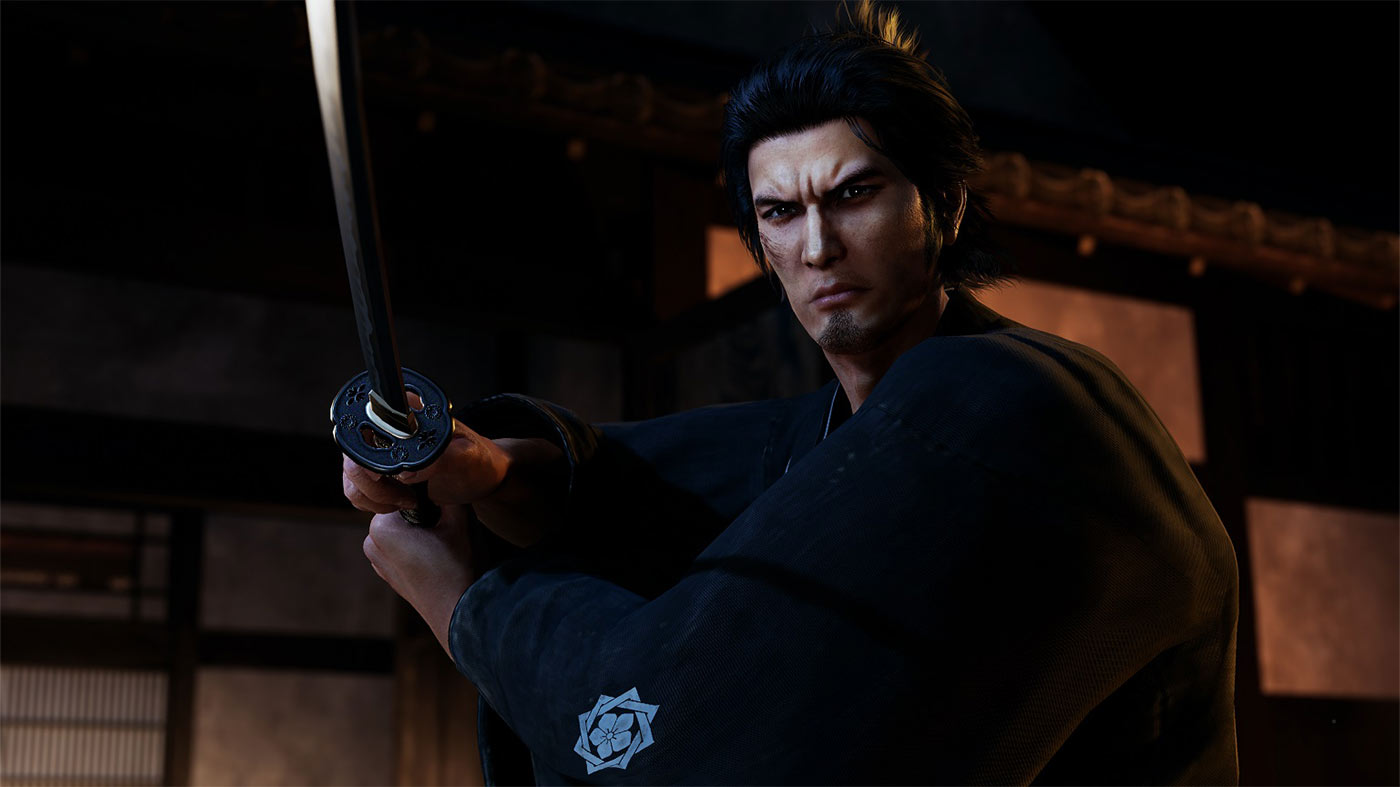
That means Kiryu (in the lead role of course), Majima, Date and dozens more familiar faces appear in this otherwise-unrelated 19th century narrative, and in the case of this new remake even some new appearances from characters introduced into the series since. It was a gleefully oddball idea nearly a decade ago and it’s just as much now, but it’s nice to live in a time where the franchise has a sure enough footing in the West to make bringing Ishin here viable. But let’s dig a bit deeper than that, shall we? Because directly following the RGG Summit I was also able to attend Tokyo Game Show 2022, where I managed to get some limited hands-on time with the game.
My preview demo plonked me square into the game proper, allowing me to explore Kyo freely and sample its activities and action. With limited time in my hands-on session I elected not to spend too much of it on the various mini-games and distractions around the city and focus more on trying my hand at the game’s combat. I feel as though I barely scratched the surface of that too, but what I did experience felt solid and fun. It’s definitely a far cry from the most recent and refined versions of real-time combat seen in the likes of Like a Dragon 6 and the Judgment games, still very much rooted in the old-school mentality of fights that occur in a separate instance to exploration, but there’s a decent enough point-of-difference in the more weapons-based combat that makes it easy to overlook a lot of that.
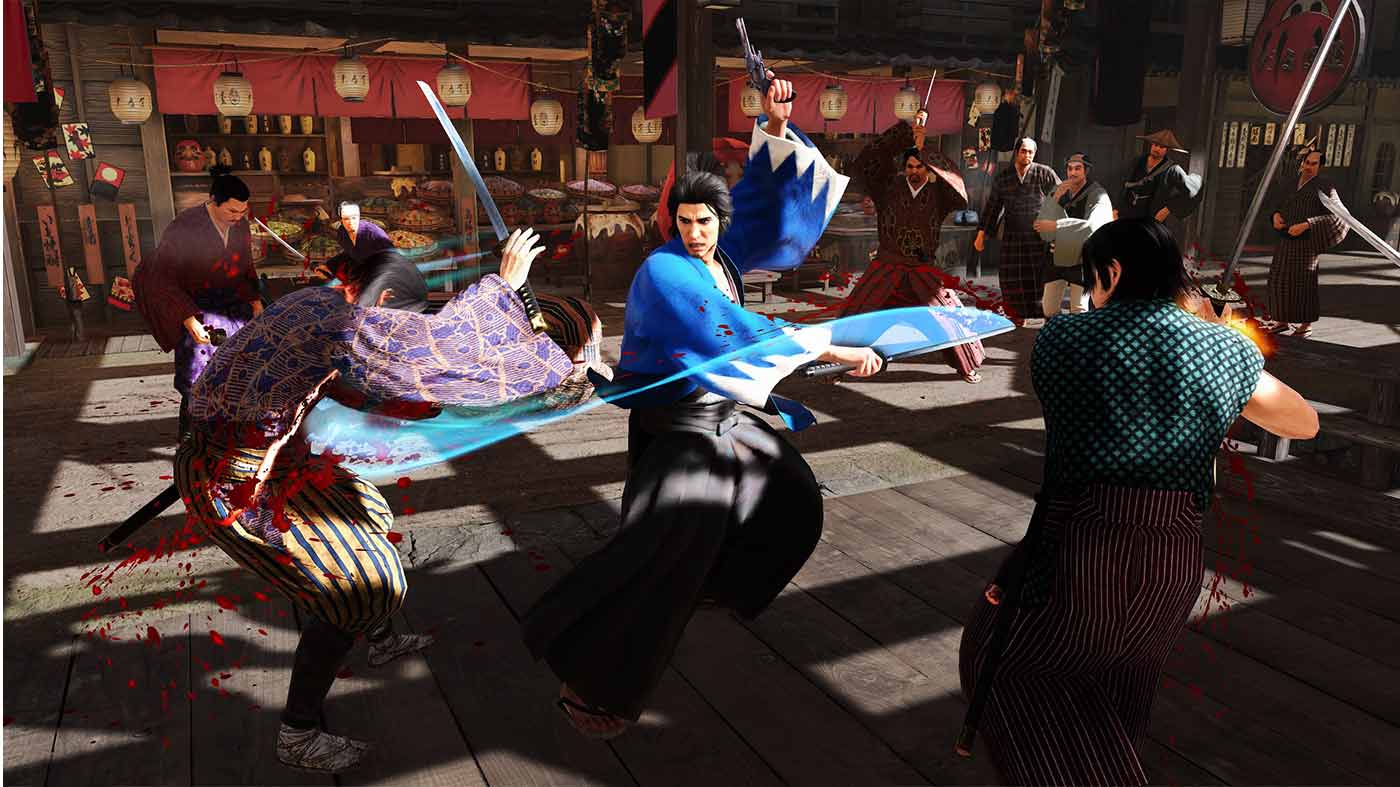
Because what would a samurai game be without swords, right? And, since we’re looking at a period of history where civil war, foreign interests and technological advancements all coalesced at the pointy end of the shogunate, a few cheeky guns as well. While the LaD games have had their fair share of both, the more considered and very deadly weapons-based combat in Ishin is a substantial shift. Playing as Kiryu Sakamoto Ryoma, players have access to four distinct fighting styles to experiment with that prioritise either his swordplay, marksmanship, brawling ability or acrobatic movement. Each has its own advantages and disadvantages, along with unique combos and skills. I felt most comfortable in the Swordsman style of combat, where you’re able to guard against enemy attacks and execute some devastating combos, but players looking for a higher skill ceiling will likely get a real kick out of the Gunman or Wild Dancer styles.
There are also the Soldier Cards, which add a tactical element to combat by letting you equip cards based on characters you’ve allied with that give you unique abilities. From what I could tell during play, it seems you’re able to equip four different cards per fighting style, meaning you can really tailor each set to suit. Some cards gave me powerful combat moves while some would perform various buffs or add a quick boost of charge to the cards I’d recently used. It’s a neat way to spice things up and give players a few tricks in their back pockets to pull out when things get dire, so I’m interested to see just how deep and robust that system is.
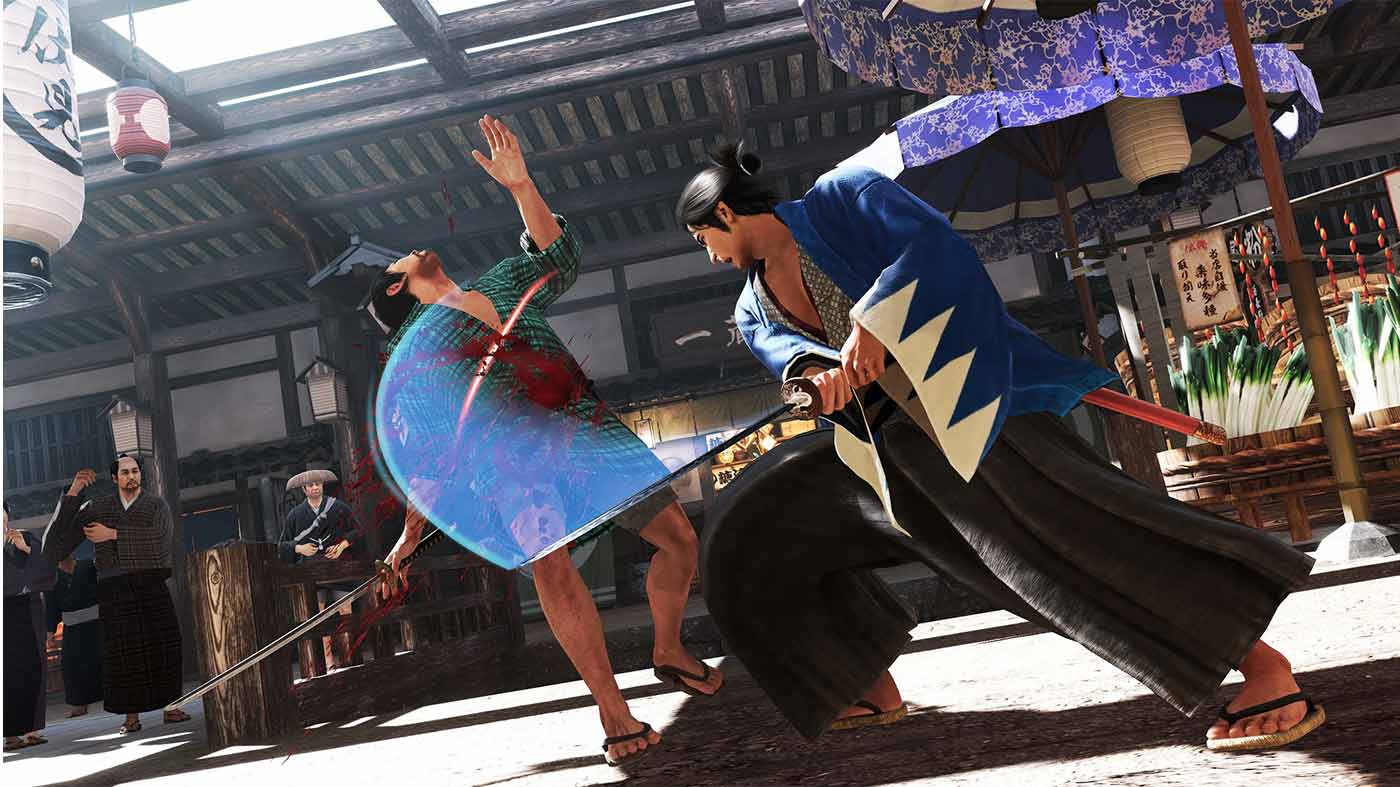
With a bit of battling experience and a scenic wander of Kyo under my belt, both in the afternoon light and by night, I got a good feel for how RGG Studio is modernising the game despite having never played the original myself. It looks great running on the Unreal Engine 4, although the hustle and bright lights of the game at night time far outshone the rather flat and dull look of Kyo during the day. You can definitely feel the bones of an older game in there though with the frequent loading screens and simple map. Still it feels incredibly special that we’re even being given the opportunity to finally play this game at all, and the team’s penchant for astonishing character models and cinematic cutscene work is here in full force.
It’s really, really hard to gauge how Like a Dragon: Ishin is panning out as a remake from such a small amount of time with the game, but what I’ve seen and played so far has me ridiculously keen to play more. I’d all but relegated myself to the idea of never playing Ishin outside of somehow becoming fluent in Japanese, so this remake is a treat for that alone, and seeing and hearing the love that RGG Studio has for its franchise as a whole is heartening. It’s a game that feels quite different from the mainline Like a Dragon games in a lot of ways, but also comfortingly familiar, not least because it stars approximations of characters you know and love.
Remarkably, as Executive Producer Masayoshi Yokoyama revealed to GameSpot during our recent roundtable talk, the localised version of the game will even include an exclusive feature that will offer guidance and context to Western players when it comes to some of the more dated or obscure Japanese language and historical references. Yokoyama even joked that many Japanese people will likely be just as lost, but they’ll seemingly not have access to the same help. You can read more about that in GameSpot’s excellent coverage.
All told, this is definitely going to be one for Yakuza/Like a Dragon fans to get around when it launches on February 21, 2023.
Amazon has the cheapest pre-order price at $89 with free shipping.
For more on Like a Dragon at TGS, read what we learned from Masayoshi Yokoyama on DLC plans as well as Like a Dragon 8’s dual protagonists, and catch up on all the announcements from RGG Summit 2022.
The author of this article attended Tokyo Game Show as a guest of SEGA.

